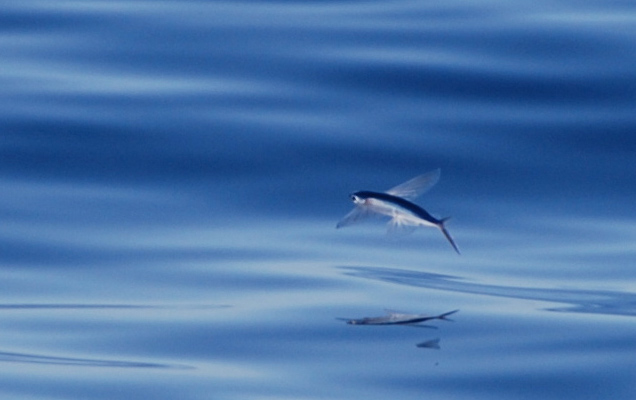Science News
Flying Fish Technology

Would you rather swim like a fish or fly like a bird? Well, according to South Korean researchers, you don’t have to choose.
After reading a book to his children about flying fish, Haecheon Choi, a mechanical engineer from Seoul National University, became obsessed with the amazing creatures. Along with a colleague, he decided to figure out how the fish stay aloft.
Their findings were published Friday in The Journal of Experimental Biology.
Incredibly, the species they studied can fly for around 40 seconds at time, at distances of 400 meters (over 1,300 feet), speeds of 70km/hour (over 43 mph), and sometimes as high as a quarter of a mile above the water.
The researchers took dead, stuffed fish and placed them in a wind tunnel to calculate their lift-to-drag ratios—a measure of the horizontal distance travelled relative to the descent in height during a glide. The fish flew fantastically. From ScienceNow:
…they found that their fins achieved better lift and less drag than the wings of many insects, and did just as well as some birds, like hawks and wood ducks.
Choi and his colleague also sorted out other details, says Wired:
At their precise angle of exit from the water, the fish achieve their greatest lift. The fin arrangement pushes air down the fishes’ bodies towards their tails, like a jet. And when the fish are just above the water’s surface, they benefit from a ground effect, in which air pressure underneath their fins creates lift.
Essentially, gliding near the surface of the sea helps the fish to go further.
And, according to Discovery News,
Though Choi and [his colleague Hyungmin] Park have solved the mystery as to how these fish fly, scientists are still unsure why they fly. The leading theory is that it enables them to avoid predators. Another idea is that the combination of flying and swimming is a more efficient mode of transportation that saves the fish energy.
(Discovery also has a great video clip of these beauties airborne.)
Choi and Park will leave the “why” to the biologists. Meanwhile, they’re working on developing an airplane inspired by flying fish technology.